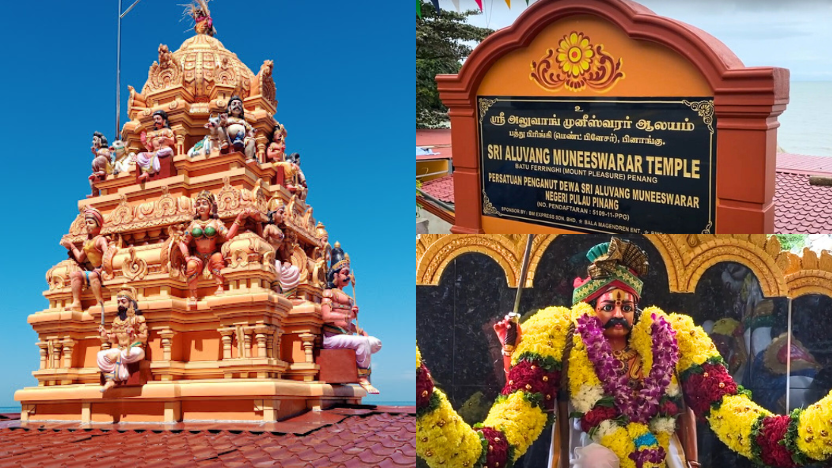The roots of the Sri Aluvang Muniswarar Temple go back more than a century, to the days of British rule in Penang. In 1858, when Indian workers were brought in to build the road towards Batu Ferringhi and Telok Bahang, something unusual happened that forever changed the place.
As they toiled under the sun, struggling with the tough coastal terrain, the workers noticed something strange, a rock by the roadside seemed to bleed when struck. Soon after, they faced obstacle after obstacle, as though an unseen power was resisting their efforts. Fearing that they had disturbed a higher force, the workers turned to prayer. Taking an aluvang, a heavy tool used to break the ground, they offered their devotion and pleaded for protection.
From that moment, the work flowed smoothly. The road was completed without further troubles, and the workers were convinced that a divine guardian had revealed himself there. They began worshipping him as Arulmigu Aluvang Munaindy Ayya, who in time came to be known as Aluvang Muniswarar, the protector who watches over devotees.

What started as a humble roadside shrine slowly grew into a place of worship. Over the decades, the temple became a spiritual anchor for the local community, unique not only for its long history but also for its rare location so close to the sea. To this day, it remains one of the *oldest temples on Penang Island.
In later years, when the road was widened, the temple was moved to its current site. It was officially registered in 2010, renovated soon after, and on 11 September 2013, the first Kumbhabishegam (consecration ceremony) was performed. Since then, it has been known as the Sri Aluvang Muniswarar Temple, continuing to draw devotees who seek his protection and blessings.
More than just a temple and how those blessings continue to be felt today.
Source : Dhaia Media, Temple-Indian.my
As they toiled under the sun, struggling with the tough coastal terrain, the workers noticed something strange, a rock by the roadside seemed to bleed when struck. Soon after, they faced obstacle after obstacle, as though an unseen power was resisting their efforts. Fearing that they had disturbed a higher force, the workers turned to prayer. Taking an aluvang, a heavy tool used to break the ground, they offered their devotion and pleaded for protection.
From that moment, the work flowed smoothly. The road was completed without further troubles, and the workers were convinced that a divine guardian had revealed himself there. They began worshipping him as Arulmigu Aluvang Munaindy Ayya, who in time came to be known as Aluvang Muniswarar, the protector who watches over devotees.

What started as a humble roadside shrine slowly grew into a place of worship. Over the decades, the temple became a spiritual anchor for the local community, unique not only for its long history but also for its rare location so close to the sea. To this day, it remains one of the *oldest temples on Penang Island.
In later years, when the road was widened, the temple was moved to its current site. It was officially registered in 2010, renovated soon after, and on 11 September 2013, the first Kumbhabishegam (consecration ceremony) was performed. Since then, it has been known as the Sri Aluvang Muniswarar Temple, continuing to draw devotees who seek his protection and blessings.
More than just a temple and how those blessings continue to be felt today.
Source : Dhaia Media, Temple-Indian.my







